The easy-phi project: a new platform for experimenters
By limpkin on Friday, August 2 2013, 10:10 - My Projects - Permalink
Hello everyone,
In this post, I will present a new open hardware project we are working on at my work....
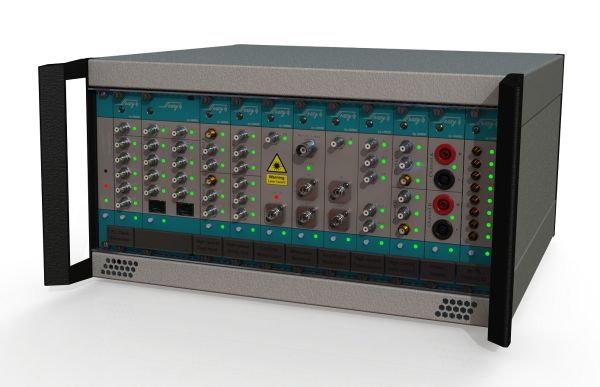
In a quantum optical laboratory, as well as in any physics laboratory, electronics are an essential tool. In particular for time correlated measurements where high speed electronics are needed.
The main idea of the easy-phi project is to build a simple, cheap but intelligent open hardware platform consisting of a 19" frame (or smaller), which can house a big variety of electronic modules.
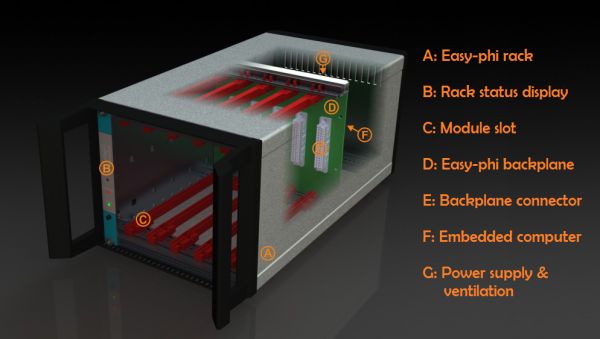
To be smart, the rack’s backplane includes the open hardware embedded computer Cubieboard (we may produce a future version with the Beaglebone). It is used to configure the connected electronic modules as well as providing connectivity via Ethernet, Wifi or USB.
The user will therefore be able to adjust each module parameters through a simple web interface, but also via Matlab / Labview modules. A monitoring system checks the backplane voltages, temperatures, and synchronization signals.
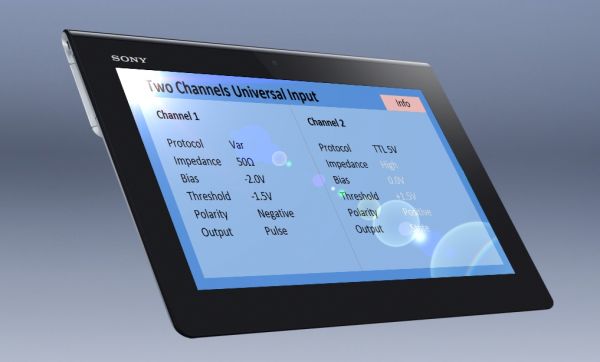
To avoid obsolescence, signals between one module and the backplane only consist in 4 synchronization signals & one 10MHz clock (common to all connected modules), one individual USB (480Mbits/s) connection, +5V (0.5A) and +12V (4A). The module is designed to be hot-plugged.
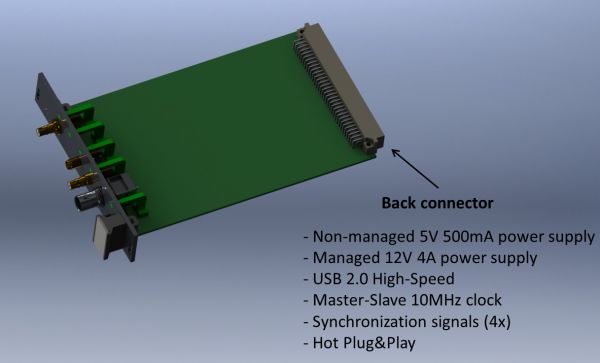
The USB connection is used by the module to send its characteristics/resources to the backplane computer while allowing the latter to configure it. Communications between the different electronics modules are made through their front panels. This allows better visibility of the overall wiring while minimizing the noise added to the signal if it was routed through the backplane.
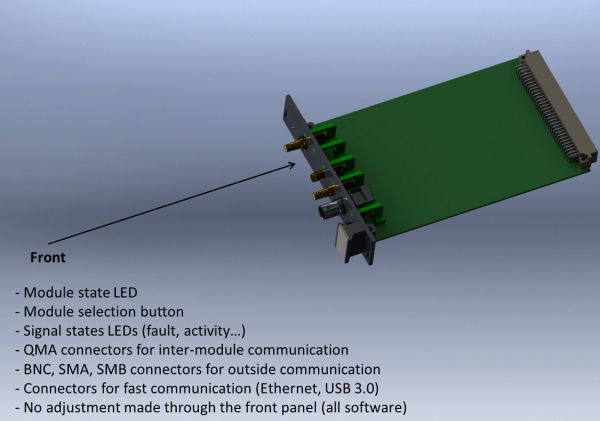
The easy-phi project is open software and hardware, as are the tools used for it.
The chosen schematics & layout software is Kicad and firmware development will be done in Eclipse (AVR studio at the moment).
Electronics enthusiasts are encouraged to develop their own modules. A template module is provided, which only contains the base components: an Arduino compatible ARM cortex-M3 Atmel microcontroller, a microsd card connector and diverse power-related components. The signals and power supplies on the connector are part of the easy-phi standard, so providing a template ensures that hobbyists will follow it.
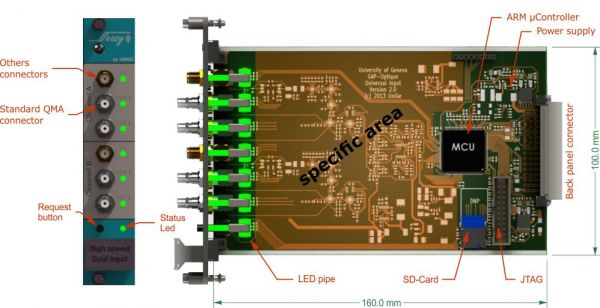
We also provide a “stand-alone adapter” connecting a single electronics module to a computer, allowing users to test their projects without having to buy the complete rack.
So please stay tuned, as in the coming weeks we are going to release advanced technical details, pictures and source files of all the work done so far. And more importantly, please check out the official website! :-)

Comments
Really interesting post! Looking forward to know more about it. Modular Systems have big future as I think. Mathieu, why did You chose Kicad? As I remember You used to use Allegro.
@Zuinc : Thanks Zuinc! That is true... Well we wanted an open source layout software, and I find Kicad to be one of the best out there :)
Kicad - why its the best for you? Did you tried others?
@Kasyno : It's open source and doesn't have limitations :).